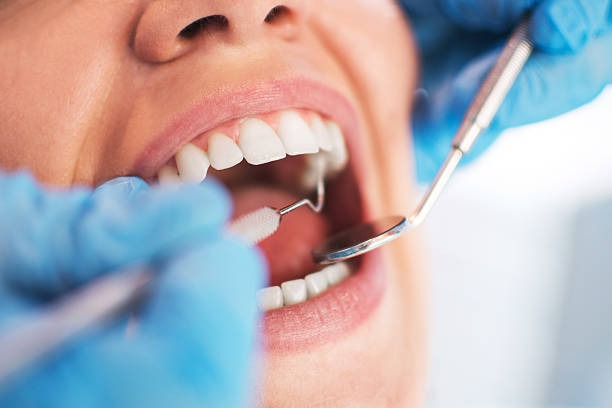When Should You Seek Immediate Dental Care?
Immediate dental care is crucial in certain situations to prevent severe complications and ensure optimal oral health. Recognizing the signs that require urgent attention from a dental professional can significantly affect outcomes. While routine check-ups are essential, specific conditions, such as sudden pain, trauma, or infections, require prompt intervention. Understanding when to seek immediate dental care is critical to maintaining your overall well-being and comfort.
Dental emergencies can arise unexpectedly, and prompt attention can make the difference between saving and losing a tooth or preventing an infection from spreading. Here are some situations when you should seek immediate dental care:
1. Severe Toothache
An intense, persistent, or worsening toothache requires immediate dental attention. While mild discomfort can sometimes be managed at home, severe pain often indicates a more serious issue, such as an abscess, deep decay, or a tooth fracture. Ignoring a severe toothache can spread infection, pain, and potential tooth loss. Seeking dental emergency New York can help diagnose the underlying cause, provide relief, and prevent further damage.
2. Uncontrolled Bleeding
Bleeding from the mouth that doesn’t stop after 10-15 minutes of applying pressure is a dental emergency. Uncontrolled bleeding can occur due to trauma, a severe gum infection, or after dental surgery. This type of bleeding is particularly concerning if it’s accompanied by dizziness, weakness, or other symptoms of significant blood loss. Immediate dental care is necessary to stop the bleeding and identify the underlying cause.
3. Broken or Chipped Tooth
Depending on the severity and location of the break, a broken or chipped tooth can range from a minor cosmetic issue to a severe emergency. If the fracture exposes the tooth’s inner layers, causing pain or sensitivity, or if a large portion of the tooth is missing, you should seek immediate dental care. Prompt treatment can prevent infection, reduce pain, and improve the chances of restoring the tooth. Even if the break seems minor, seeing a dentist as soon as possible is essential to prevent further damage.
4. Abscessed Tooth
An abscessed tooth is a serious condition that results from a bacterial infection, usually at the root of the tooth or between the tooth and the gum. Symptoms of an abscessed tooth include severe pain, swelling, fever, a bad taste in the mouth, and the presence of a pus-filled bump on the gums. This condition requires immediate dental care, as the infection can spread to other parts of the body, leading to more severe health issues. Treatment often involves draining the abscess, removing the infection, and possibly extracting the affected tooth.
5. Knocked-Out Tooth (Avulsed Tooth)
If a tooth has been completely knocked out due to trauma or injury, it’s considered a dental emergency. Immediate action is critical for the possibility of saving the tooth. If the tooth is intact, try to place it back into the socket, holding it by the crown (the top part) and not the root. If reinsertion isn’t possible, keep the tooth moist in milk or saline solution and seek dental care within 30 minutes to an hour.
The sooner you receive treatment, the better the chances of successfully reimplanting the tooth. In cases where reimplantation isn’t possible, consulting this dental implants dentist can provide practical alternatives to restore your smile and oral functionality.
6. Swelling or Infection in the Mouth
Swelling in the mouth, face, or neck, especially if accompanied by pain or fever, can signify a severe infection. Dental infections, such as abscesses, can cause significant swelling that may obstruct the airway or lead to systemic infections like sepsis. If you notice swelling that spreads rapidly, difficulty swallowing or breathing, or signs of infection, such as fever or chills, you should seek emergency dental care immediately. Early intervention is critical to preventing infection and ensuring your safety.
7. Lost Filling or Crown
While not always an emergency, losing a filling or crown can lead to pain, sensitivity, and further damage to the affected tooth. If a filling or crown falls out, it’s important to seek dental care as soon as possible to restore the protection it provides. In the meantime, you can cover the exposed area with dental cement or sugar-free gum to protect it from food particles and bacteria. Delaying treatment can result in more extensive decay or even the need for a root canal or extraction.
8. Cracked or Fractured Tooth with Pain
A cracked or fractured tooth may not always cause immediate pain, but it’s important to seek dental care promptly if you experience significant discomfort, sensitivity, or swelling. If you’re in the area, you might want to see dentist New York City sooner rather than later. A crack that extends into the root or pulp of the tooth can lead to infection, abscess formation, or tooth loss if not treated quickly. Even tiny cracks can worsen over time, so it’s best to have them evaluated by a dentist as soon as possible.
Wrapping Up
Immediate dental care is essential in situations involving severe pain, trauma, infection, or uncontrolled bleeding. Delaying treatment can lead to complications, such as the spread of infection, increased pain, and potential tooth loss. If you are in a dental emergency, you must contact your dentist or visit an emergency dental clinic immediately. Awareness of these signs can help you respond quickly and protect your oral and overall health.






